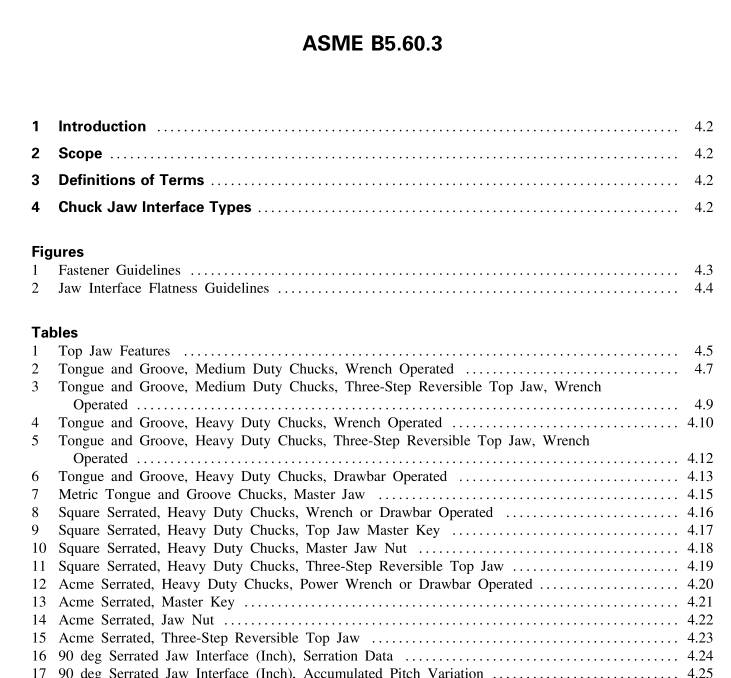ASME B5.60B:2009 pdf free download JAW MOUNTINGS
1 INTRODUCTION
This American National Standard establishes techni-cal requirements for workholding chucks used primarilyin turning operations.It covers jaw type chucks whethermanual or power operated.
2 scOPE
This Part of the ASME B5.60 Standard covers theinterface of two-piece chuck jaws.
3 DEFINITIONS OF TERMS
fasteners:accessory devices (usually threaded) thatare used to secure the top jaw onto the master jaw(see Fig. 1).
groove (slot):a recessed geometric form that receivesa tongue,key,or jaw nut for positioning the top jawwith the master jaw.
hard top jaw:a top jaw that is made to its final sizeof hardenable steel. It is not intended to be machinedin use.
jaw interface:geometric forms with fastening ele-ments that position and secure top jaws to master jaws(see Fig. 2).
jaw nut:the fastener used in the master jaw forsecuring and, in some designs, positioning the top jawwith the master jaw.
jaw-nui slot:a T-slot in the master jaw for receivinga jaw nut.
master jaw (base jaw):radial-moving part within thechuck body to which the top jaw is mounted.
master jaw pins:precision pins that position the topjaw with the master jaw.
master key: a serrated positioning key, secured in thetop jaw.
monoblock (solid style jaw): a one-piece combinationmaster and top jaw.
serration: a repetitive geometric form for radial posi-tioning the top jaw with the master jaw.
soft top jaw (blank jaw): a top jaw that is not heat-treated and is formed prior to usage.
tongue:the projected geometric form that aligns thetop jaw with the master jaw.
top jaw: component that clamps the workpiece andis mounted on a master jaw.
4 CHuCK JAW INTERFACE TYPES
See Table 1 for top jaw features.
ASME B5.60B:2009 pdf free download
